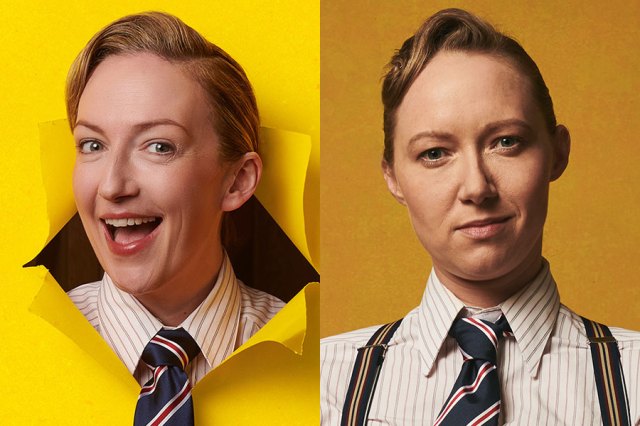Waves (London & tour)
NOTE: This review dates from November 2006 and this production’s original run at the National Theatre. Some casting has changed.
Director Katie Mitchell and her colleagues – eight actors, four musicians, designer Vicki Mortimer, lighting designer Paule Constable, tap-dance coach Donna Berlin – have been making Waves from Virginia Woolf’s 1931 novel about a group of six friends free-associating in what Woolf herself described as “dramatic soliloquies” from childhood to middle age.
Perhaps making rivulets, or stains, or puddles, would be more accurate a description of what goes on here. It is an intriguing technical exercise to subject stretches of Woolf’s opalescent prose and the tiniest of her characters’ internal reflections to the expository apparatus of video camera, sound effects, lamps and microphones that are all arrayed on a long table, as in a recording studio or tribunal hearing.
There is a distinctly hushed and reverential air to the proceedings, governed by the rise and fall of the tide and the shifting patterns of light from dawn to dusk. The actors read from small, dog-eared texts. But there is also a ruthless precision and brilliant amalgamation of so many technical elements reminiscent of the Wooster Group, say, or some of the more intense European companies.
A woman in bed feels the safety of the iron rail and we immediately have a filmed close-up of her foot. “My body has come into the room where the gilt chairs are,” and we have a quick flash of thigh and an instant conjuration of the railway journey impregnated with sexual arousal. The homosexual aesthete, Neville (Paul Ready), yearns for a companion and chomps on a large banana to the plangent strains of Donizetti’s “Una furtiva lagrima.”
We go from childhood in the magical school garden – peeping through hedges is done with little green sprigs – to schooldays, university, intimations of mortality (with make-up) on the tube in London, a dinner party in the jazz age, the smells and sighs of the shaving Bernard (Michael Gould), the despair and watery suicide of the married Rhoda (Anastasia Hille), all attended, supervised even, by the camera operators and fellow actors.
The crunch of gravel or the echoing pavements is done on flat squares, or flag stones, and on a couple of occasions – not enough, actually – the company coheres into a wonderfully coordinated tap dance. As the show concentrates so doggedly on the minutiae of the writing, I think Mitchell loses sight of the larger span of the original, its sense of the creation of a universe out of falling leaves, or flecks of dust. One of the actors with a posh voice (Kristin Hutchinson) does read some of the linking descriptive passages, but they don’t have any real binding effect.
This show will not be universally popular, but it is fascinating and will obviously appeal to lovers of Woolf’s writing, and those who have sobbed themselves to sleep while reading this book in adolescence. The dedication of the cast – which includes Sean Jackson, Liz Kettle and Kate Duchene – is beyond praise, and I think it marks a return to NT form for Mitchell after her baffling and disappointing version of The Seagull.
– Michael Coveney












